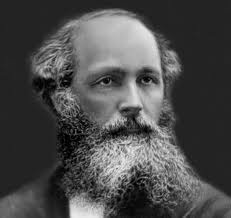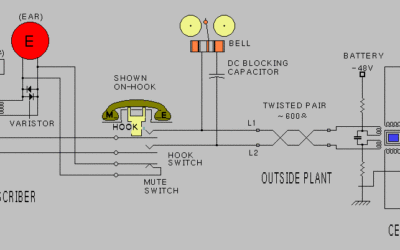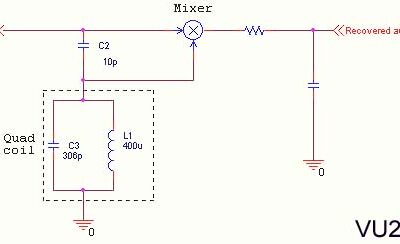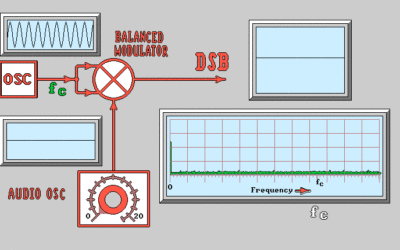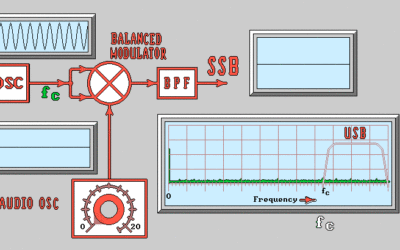Quantities and units.
Electricity is a difficult substance to appreciate with the human senses. About the only way you get a feeling for it is to moisten the tongue and apply it between the terminals of a 9 volt battery. Of course, you get more idea if you are unfortunate enough or foolish enough to touch a live mains cable… providing that you survive to describe the experience.
Here are some electrical quantities and their SI units and symbols.
- Electric charge (coulombs), q or Q
- Volume charge density (coulombs per cubic meter) rho
- Surface charge density (coulombs per square meter) sigma
- Linear charge density (coulombs per meter) lambda
- Electrostatic potential (volts) phi
- Electric field (volts per meter) E
- Electric induction D = epsilon.E (coulombs per square meter) D
- Electric current (amps or coulombs per second) I
- Electric current density (amps per square meter) J
- Magnetic field H (amps per meter or amp turns per meter) H
- Magnetic field B = mu.H (tesla) B
- Magnetic vector potential (tesla meters) A
- Capacitance (coulombs per volt, or Farads) C
- Inductance (volts-seconds per amp, or Henries) L
- Permittivity (Farads per meter) epsilon
- Permeability (Henries per meter) mu
- Velocity of light in vacuum (meters per second) c
A loose description.
Electric fields form lines which are trajectories along which a very small free charge would travel in the absence of a magnetic field in the same place.
Magnetic fields form lines along which little bar magnets “dipoles” or iron filings would align.
The flow of charge constitutes a current. Charge is neither created or destroyed, so if in a region there is a changing charge (with time) then there must be current flow in or out of that region. Currents often travel along electric field line directions and generate magnetic fields.
In regions of constant charge density, all currents flow in closed loops. If the current loop does not close then there must be accumulation of charge which varies with time.
All magnetic fields B form closed loops. Loops of B are linked with loops of current density (J) or displacement current density ((d/dt)D).
Electric field lines either begin or end on charges or else they too form closed loops.
In a radiating situation, the currents, charges, fields, and potentials are all time varying. If one assumes a sinusoidal variation with time having angular frequency omega, then a general radiation problem can be solved by Fourier superposition of the solutions at different values of the angular frequency omega. Fortunately in most practical situations the fractional bandwidth occupied by the signal is rather small and so the properties of the radiating structure do not vary very much across the band of signal frequencies.
Mathematical presentation of Maxwell’s Equations
There are four of Maxwell’s Equations plus a charge continuity equation. You need to study your favorite vector differential calculus book to learn about the divergence (div), curl (curl), and gradient (grad). Roughly, the gradient represents the “slope” of a scalar field along the direction of maximum change, and the gradient is a vector. The divergence represents the flow out of a small volume, per unit volume, and is a scalar. The curl represents the rotation of a field around a point; for a magnetic field forming closed loops it is the limit of the size of the field times the perimeter of the loop divided by the area of the loop, as the loop shrinks to nothing. The curl is a vector as it has an associated axis of circulation or direction in space.
Here are the four Maxwell’s equations and the continuity equation.
- div D = rho
- div B = 0
- curl E = – (d/dt)B
- curl H = (d/dt)D + J
and the continuity equation for charge…. - div J + (d/dt)rho = 0
Let us go through these…
- Lines of D, electric induction, are proportional to the electric field and “diverge” away from a region containing charge density rho. If there is a surface charge sigma (coulombs per square meter) then close to the charge sheet is an electric induction field D = sigma.
- Lines of B never diverge from anything, and form closed loops.
- Electric field lines which form closed loops, encircle a changing magnetic field. Lenz’s law applies; the electric field if it drove a current would do so in such a way as to reduce the changing magnetic field within the loop. Electric field lines which do not form closed loops begin and end on charge, as we have seen from the first equation.
- Magnetic field lines H form loops which encircle both conduction current density J, and also “displacement current density” (d/dt)D which is generated by time-varying electric fields. Maxwell’s great achievement was to realize that the term in (d/dt)D was necessary; if you consider a capacitor with plates very close together, then if the displacement current term did not generate magnetic field loops there would be an unphysical discontinuity in the magnetic fields around the capacitor plates as you passed alternating current through the capacitor.
- The current density J flowing out of a region (“diverging”) must result in a decrease of charge within the region.
Sources of fields
Currents and charges give rise to the fields and are called “sources”. More directly, the potentials can be calculated from the source charge and current distributions and the fields are then derived from the potentials.
In an electrostatics situation the electric field E is given just by
E = -grad(phi) which begins and ends on charges.
However, if there are changing magnetic fields there is an additional contribution to the electric field forming the closed loops which circulate around the changing magnetic field lines.
The magnetic vector potential A may be used to find the magnetic field B by the relation (which is a definition of A)
B = curl(A)
To define A completely we have to specify its divergence as well as its curl, and possibly an additive constant also. If we do this according to what is known as the “Lorentz Gauge” then the electric field may be calculated from
E = -(d/dt)A – grad(phi)
Part of the source of electric field is from the magnetic vector potential A and part from the scalar potential phi.
If we know the potentials A and phi completely for all time and space we can calculate the fields E and B.
A little more detailed mathematics (see the text of your choice) shows that the conduction currents J give rise to the magnetic vector potential A, and the source charges rho give rise to the scalar potential phi. Because there is a maximum velocity of propagation c=3E8 meters per second, the potentials A and phi at a distance r meters from the source cannot follow changes in the source distributions until a time r/c seconds later. These potentials are known as the “retarded potentials”.
Considering the equation
E = -grad(phi) – (d/dt)A
we observe that in the far field the potentials A and phi fall off as 1/r where r is the distance from the sources. However, applying the gradient operator to phi puts in a further dependence of 1/r to the contribution -grad(phi). Thus the electric field E due to the charges in the source falls off as 1/(r^2) and can be neglected at large r compared to the electric field contribution -(d/dt)A which falls off as 1/r.
Thus, for far field calculations it is true to say that only the source currents on the antenna structure need be considered.
For time-harmonic currents, since the charge continuity equation links the current density J to the source charge density rho, the potential phi may be expressed in terms of the vector potential A, and so there is no loss of generality in considering the far-fields as being entirely due to source currents plus any pre-existing electromagnetic propagating waves.
It is very easy to conduct a gedankenexperiment to show that, for near field scenarios, the conduction currents on the source structures are not sufficient to use as a basis for field calculations.
Consider an open ended waveguide carrying a TE10 waveguide mode. Let us assume that the waveguide is very large in transverse dimensions compared to a wavelength. Now consider a point on the axis of the waveguide, beyond the plane at which the waveguide stops, along the z-direction. Let us assume that this point is closer to the point z=0 which defines the exit plane, than it is to any of the current elements on the waveguide walls. If only conduction currents starting at time zero contribute to the field strength at this point, there can be no field at this observation point at a time less than the retardation time from the guide walls.
Now, as we let the guide dimensions get larger (without limit) we can show that for any specific point on the axis of the waveguide, beyond the waveguide end plane, the fields due to the currents in the walls are zero for finite time. If we take the view that the waveguide is the only structure generating em fields, and that there are no pre-existing propagating waves along the axis of the guide, then this result appears contradictory and unphysical, and so the accepted theory, and probably all the antenna calculations and simulation code based on fields being set up only by the source currents, may be in error.
Another way of looking at this problem is that the wave front progresses along the waveguide at the group velocity, which is lower than the velocity of light in the medium. Regarded as a radiating structure, the mouth of the waveguide sets off a propagating wave in free space which travels at the velocity of light. There must therefore be a contribution to the radiated fields from the center of the guide mouth, where the conduction currents are zero. Yet another insight may be obtained by appealing to Huygen’s principle in wave optics, where each point on a propagating wave front is regarded as giving rise to an outgoing hemispherical wave front. Thus if we consider radiation from a burst of microwaves propagating in free space at time zero, there are no source currents in the problem at all, within the limits of the definition of the problem.
Most antenna calculations are made assuming that the time harmonic radiation has persisted/persists for all times past and future and so the problem of what happens at the start of a radiating wave front is hidden from the analysis.
Further examination of the equations shows that A and therefore E (in the far field) lies in the preferred direction of the current sources. (The preferred direction may be taken to be an average direction over all the source currents.) The magnetic field B on the other hand forms loops around the current direction, and therefore B is at right angles to E and to the preferred direction of the current sources.
Moving charge constitutes a current. In most wires, there is a near-balance between mobile negative charge (electrons) and a background sea of positive charge (ions) which is stationary. It is therefore possible to have an “electrically neutral current” wherein the moving charge forming the current does not itself provide a source of charge density rho and therefore of electrostatic scalar potential phi.
For this reason, in many antennas textbooks, near field as well as far field radiation is assumed to be entirely determined if only the current distribution in the source is known. This is sufficient for many antennas problems. However, where there are serious discrepancies between the predictions of standard theory and the measurements on a specific antenna structure, one should look to see if there are any significant time-varying charge accumulations within the antenna conductor structure, or on any local scattering objects. One should also look to see if there are any photons emitted by transitions between electron energy levels, and to see if there are any pre-existing EM waves.
Antenna calculations
We are part way to our objective. If we know the current (and possibly charge) distributions on our antenna structure we should be able to calculate the fields anywhere for all time. However, in many antenna calculation scenarios the current distribution is not a “given” property of the problem. Often the antenna is connected to a length of transmission line (a feed), which may be coaxial cable, parallel wire line, microstrip, or it may be waveguide. The feed itself will have currents on it and may contribute to the radiation. Frequently one may assume a voltage at the junction between the feed and the antenna structure proper, but calculating the current and charge distribution on the structure after that point may be very difficult.
In aperture antenna radiation pattern calculations, a frequent ploy is to create a fictitious surface across the mouth of the aperture. Arguing backwards from the result, there will be electric and magnetic field lines intersecting this surface. One then can create an arrangement of fictitious charges and currents, and also magnetic charges and currents, on this surface. These are calculated to give rise to the local field structures on the surface, and then used to calculate the radiation field patterns at other points in space. Of course, this method requires one to have a reasonably accurate knowledge of the fields on the fictitious surface in the first place, and this may be no easier than calculating the current and charge distributions on the source structure.
Of course, if the fields are known accurately across a surface one can use Fourier Transform techniques to calculate the radiation patterns in the far field. Such techniques are frequently referred to as the “geometrical theory of diffraction”. If there are physical dielectric or magnetic obstacles in the near field then calculation of the perturbations of the field patterns by the objects may be necessary, such methods may be grouped under the heading “physical theory of diffraction”.
One of the difficulties with all antenna calculations on complex structures is that in most cases the measurement techniques available do not have sufficient precision and accuracy to determine the validity of the calculation method used. Thus many antenna calculations have to be regarded as speculative; this is a problem for the simulator particularly if the method used consumes large amounts of computing resources to little avail.
